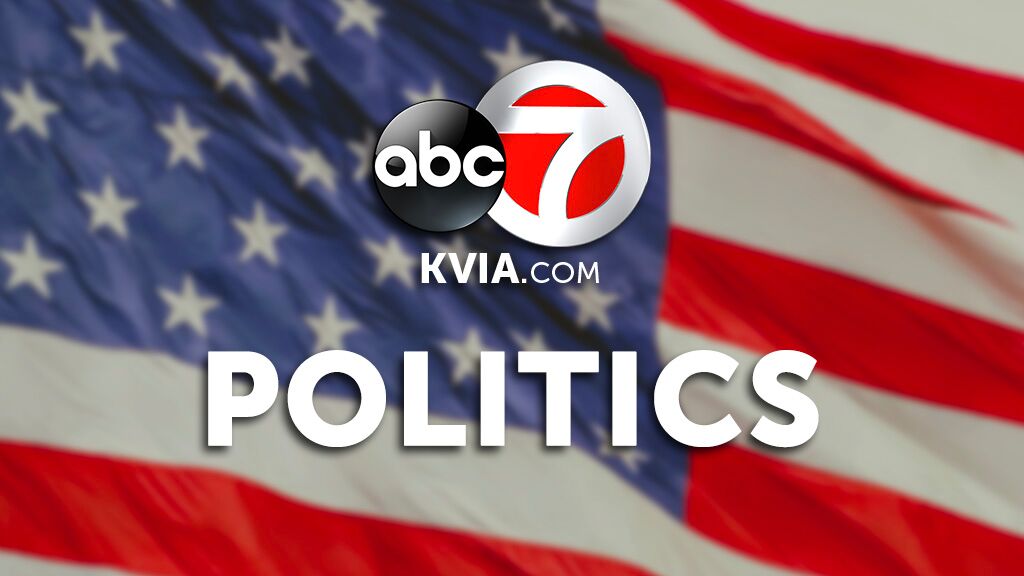Trump’s options for winning a second term are narrowing

The tumultuous impeachment hearings and the string of GOP election losses this fall underline the electoral risks Republicans are courting as they allow President Donald Trump to refashion the party in his combative image.
In overlapping ways, the election results and the hearings — in particular Trump’s characteristically belligerent response to them — have highlighted each of his three greatest potential electoral vulnerabilities in 2020, as well as the offsetting strengths that may allow him to surmount those weaknesses.
The three biggest challenges looming in 2020 for Trump, many analysts agree, are:
- The recoil from his definition of the Republican Party in white-collar suburbs, including many that previously leaned toward the GOP.
- A feedback loop in which his efforts to mobilize turnout among his core supporters are producing an offsetting turnout surge among key Democratic groups, particularly African Americans.
- An unremittingly confrontational personal style that appears to be alienating a broad swath of female voters, including some of the non-college white women who helped drive his 2016 victory. That behavior was exemplified by Trump’s tweet last week attacking former US Ambassador to the Ukraine Marie Yovanovitch in bitterly personal terms.
Trump’s principal political assets on the other side of the ledger are his success at consolidating and energizing the Republican base and deepening the GOP’s dominance among white voters who live outside of major population centers, identify as evangelical Christians or lack college degrees, especially the men in each of those groups.
As the impeachment struggle and the off-year elections have simultaneously unfolded this fall, they have illuminated all of these dynamics. But the events are underscoring the trends that threaten Trump even more powerfully than those that benefit him.
Of these ominous trends for the President, the clearest this fall is the GOP’s continued erosion in well-educated and prosperous suburbs around the country, where Trump’s message of resistance to cultural and demographic change has alienated voters otherwise drawn to Republican economic policies.
Sharp declines for Republican candidates in white-collar suburban areas were a common feature this month of the Democratic takeover of both chambers of the Virginia state Legislature and the party’s gubernatorial victories in Kentucky and Louisiana, two states that have leaned strongly toward the GOP. (The effect was less pronounced in ruby red Mississippi, one of the nation’s most resolutely conservative states, where Republicans maintained control of the governorship this month.)
“They are just losing large parts of their previous electorate and they don’t quite know what to do about it,” says veteran Democratic strategist James Carville, who is based in New Orleans.
Tom Davis, a former Republican US representative from suburban Northern Virginia who chaired the National Republican Congressional Committee, notes that GOP candidates this fall generally performed well in suburban areas in races lower on the ballot, such as the other statewide offices in Kentucky and state legislative seats in Louisiana. But he said the party can no longer brush off the declines it suffered in the top-of-the-ticket races in those well-educated suburbs.
“They can’t ignore it,” said Davis, now a Washington lobbyist. “It accounted for both of those (gubernatorial) losses, and it accounted for the loss of the Legislature in Virginia. They are bleeding in the suburbs at this point.”
Changes in the suburbs
The suburban realignment predates Trump. The parties have been shifting their class support since the early 1990s, with Democrats improving their performance among well-educated white voters and the GOP establishing a growing hold over working-class whites without college degrees. (Democrats continue to dominate among nonwhite voters at all education levels.) But this process — what I’ve called the class inversion — has significantly accelerated under him.
In the 2018 midterm elections, Republicans were routed in suburban districts across the country, including those in metropolitan areas, such as Atlanta, Houston and Dallas, that had resisted the general shift in such places toward the Democrats earlier.
The biggest message of the 2019 elections has been that the suburban recoil from Trump’s definition of the GOP has continued to spread beyond traditionally Democratic-leaning terrain. Democrats this fall consolidated their advantage in Washington exurbs and Richmond suburbs that not long ago leaned Republican; made gains during the Kentucky governor’s race in white-collar northern suburbs in the state that function as bedroom communities for Cincinnati; and posted big advances in more affluent white communities around New Orleans and Baton Rouge in Democrat John Bel Edwards’ Louisiana gubernatorial win last weekend.
When Bel Edwards was first elected in 2015, he lost the predominantly white suburban communities of East Jefferson Parish outside New Orleans by nearly 20 percentage points; on Saturday he ran even there, according to calculations by J. Miles Coleman, an analyst for the University of Virginia’s Crystal Ball website.
Carville notes that the suburban communities of East Jefferson Parish that moved away from the GOP on Saturday was where the Republican Party first put down roots in the state. The same pattern, he noted, was true in Texas, where Dallas suburbs that marked the GOP’s first beachhead there in the 1960s moved sharply Democratic in the 2018 Senate race.
“That’s the birthplace of Louisiana Republicanism, Jefferson Parish,” Carville said. “Look at the north side of Dallas, west side of Houston, suburbs of Atlanta. Look at northern Kentucky. Boom. They are hemorrhaging.”
Given those trends, Carville and other Democrats note, the party could win more suburban House seats across the South in 2020, including opportunities outside Atlanta, Dallas, Houston and Austin, and potentially in North Carolina, as state courts force the GOP-controlled Legislature to draw new maps there.
The flip side of the GOP’s suburban erosion under Trump has been its strengthening hold on small-town and rural communities. This year, with the exception of some decline for Republican Gov. Matt Bevin in a few rural eastern Kentucky counties, GOP candidates have continued to enjoy big margins and robust turnout from the rural and small-town voters Trump has predominantly targeted in his visits to the states holding elections.
The problem for Republicans has been that Trump’s polarizing presidency — reinforced by the highly combative message he’s delivered on his campaign visits to these states — has inspired at least as much turnout among key Democratic constituencies, particularly in urban centers.
In Kentucky, Andy Beshear, the Democrat who won the gubernatorial race, attracted a stunning 283,000 more votes than the party’s last governor candidate in 2015, Jack Conway. Nearly two-thirds of that increase came from the state’s major cities and counties; Kentucky’s two largest population centers alone, Louisville and Lexington, accounted for 40% of the Democratic vote increase, according to calculations by Bill Bishop, editor of the website The Daily Yonder.
Similarly, in Louisiana on Saturday, heavily African American Orleans Parish (New Orleans) gave Bel Edwards a net margin of nearly 102,000 votes; in 2015, he carried New Orleans by about 70,000 votes.
As Louisiana election analyst Edward Chervenak told veteran political reporter Tyler Bridges from The Advocate in New Orleans, the results show that “Trump is as likely to galvanize opposition … as he is to mobilize supporters.”
Gaining some, but losing more
One GOP strategist, who asked not to be identified while discussing internal party calculations, said that privately there is growing concern among Republican political professionals about the implications of Trump improving the party’s standing in smaller places that are losing population while eroding its position in urban centers and inner suburbs that have been growing.
“Rural places are becoming less Democratic, but the suburbs, which are way more populated, are becoming much less Republican,” said the strategist. “Given the natural flow of how population is moving and migrating, you are trading out 8 (Republican) votes for 10 (Democratic ones), maybe 9 votes for 10, but never 11 votes for 10. Never. That’s the problem.”
Mike Murphy, a longtime GOP strategist who has been critical of Trump, says the GOP may be able to regain ground in suburban areas in 2020 if the Democrats nominate a vanguard liberal candidate, such as Sens. Bernie Sanders of Vermont or Elizabeth Warren of Massachusetts, who some of those voters consider a threat to the economy. But absent that, he says, Republicans and Trump may not have reached the bottom of their suburban decline.
That’s partly, he says, because college-educated voters, who polls show pay the most attention to the news, may be most likely to sour further on Trump from the revelations in the impeachment process.
“There’s room for it to get worse, because I think impeachment will have a growing effect with higher-educated suburban voters,” Murphy said in an email.
The impeachment process has highlighted an offsetting strength for Trump: the depth of his hold on his hard-core supporters. Polls have not found any meaningful decline in his approval rating since the controversy began, particularly among Republican voters. That unshakeable support in the party base has encouraged the nearly undivided loyalty that Republicans on the House Intelligence Committee have displayed during the hearings. In turn, the refusal of almost any Republican elected officials to question Trump’s conduct in Ukraine has helped him retain his solid support among GOP voters, who have not heard criticism of the President from partisan officials they trust, much less the conservative information transmission system centered on Fox News.
The problem for Trump is that his standing has stabilized at a point with his approval rating consistently 40-45% at best and a majority of Americans saying they disapprove of his performance. Most worrisome for the President is that compared with his showing in the 2016 election, polls consistently report that he’s lost ground among two key groups of white voters who usually lean Republican: college-educated white men and white women without college degrees.
Impeachment may complicate Trump’s position with each of those groups. College-educated white men are heavy consumers of political news, polls show, and as such may be especially sensitive to revelations that emerge from the hearings about Trump’s actions.
Blue-collar women are concerned
Working-class white women may be even more important to Trump’s fate. They were critical to his 2016 win: Every major data source shows he won them by at least 20 percentage points. Exit polls found that in the three Rust Belt states that tipped him the election — Michigan, Wisconsin and Pennsylvania — Trump won significantly more of those women than Mitt Romney had in 2012.
But exit polls in 2018 found strong evidence those women had pulled back at least somewhat from the GOP. Almost all surveys show continued cracks in his standing with these blue-collar women.
In Wisconsin polling by the Marquette University law school, Trump’s approval rating among non-college white women averages just 42% through his presidency; the latest Muhlenberg College survey in Pennsylvania found that he led Democratic Joe Biden among them by just 5 percentage points (after beating Hillary Clinton by 20 points with them there in 2016, according to the exit polls). Recent state surveys by the Kaiser Family Foundation and Cook Political Report likewise put Trump’s approval among non-college white women at just 42% in Michigan, 43% in Wisconsin and 46% in Pennsylvania. Nationally, an average of the weekly polls conducted since July by the Nationscape project, launched by the Democracy Fund and UCLA political scientists, found that Trump’s approval among non-college white women who are not evangelical Christians — who account for most non-college white women in the Rust Belt — stood at just 41%.
These non-college white women have been much less likely than their college-educated white counterparts to say in polls that Trump did something wrong in Ukraine or that he deserves to be removed from office. But polling and focus group research alike have consistently found that many of them are uncomfortable with Trump’s demeanor, language and belligerence.
The danger for Trump is that his typically confrontational response to the impeachment threat, while thrilling many men in his base, may be exacerbating those concerns among some blue-collar women. Stanley B. Greenberg, the veteran Democratic pollster, says he believes Trump’s disparaging attack on former Ambassador Yovanovitch could galvanize concerns among female voters about both his overall behavior and his specific treatment of women.
“I bet we will look back on this and say this is when things took another turn in which you end up with a gender tsunami, that crossed every group and that includes the white working-class women, turning against him,” Greenberg said. “It was already happening, obviously. My guess is it accelerates that trend.”
Demeanor isn’t the only problem for Trump with blue-collar women, Greenberg believes. Polls show they reacted badly to his efforts to repeal the Affordable Care Act in 2017. Greenberg, like many party strategists, believes that the Democratic support for expanding Medicaid to more of the uninsured — a key element of the party campaigns in Virginia, Louisiana and Kentucky alike this year — was especially resonant for women, including those in the white working class.
“I’d bet it was the women more than anyone who reacted” to the Democratic support for expanding Medicaid, he said.
The GOP strategist who asked not to be identified agrees that Republicans face a problem with these women but believes it is rooted much more in personal than policy issues. In focus groups, the strategist said, it is common to hear from blue-collar white women that they agree with many of Trump’s policies but cannot accept his personal behavior.
“Even when you look at downscale white women they might love what he is doing but there is significant reticence about his style and also the drama,” the strategist said. “There is fatigue at the drama of it all.”
The likelihood that the House will impeach Trump, like the 2019 election results, does not ensure that he will be defeated next year. But they are shaping the pathways to another term that are realistically available to him. Even if the impeachment hearings are not splintering the minority of voters who approve of Trump’s performance, there’s evidence they are hardening resistance to him among the majority who don’t: Among voters who say they disapprove of Trump’s job performance, for instance, more than 90% said in a recent Quinnipiac survey that he was pursuing his personal interest, not the national interest, in Ukraine.
Such trends suggest that to win another term, Trump likely will have to motivate another turnout surge among his core supporters of blue-collar, evangelical and non-urban whites, without provoking the offsetting mobilization among Democrats evident in elections in 2017, 2018 and again this fall.
Trump might manage that feat in just enough of the few genuine swing states to win an Electoral College majority. But the events of the past few weeks — both on the campaign trail and in the congressional hearing room where the impeachment inquiry is unfolding — underscore how narrow a tightrope he’s walking.



